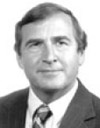| Home | Blog | Ask This | Showcase | Commentary | Comments | About Us | Contributors | Contact Us |

Is nuclear terrorism the ultimate preventable catastrophe?ASK THIS | September 251, 2004National security expert Graham Allison writes that when it comes to preventing nuclear terrorism, the press should be asking what, if anything, has the Bush administration accomplished — and what needs to be done. By Graham Allison Q. How real is the threat of nuclear terrorism? Q. Can it be prevented? Q. What is our current administration doing to prevent this threat? Q. Has the war in Iraq made us more vulnerable or are we safer than we were a year ago? The CIA is sounding the alarm about another major terrorist attack before November 2. Osama bin Laden has challenged the Al Qaeda movement to trump 9/11. The list of attacks that can meet that test is short. The ultimate terrorist spectacular would be a mushroom cloud over a major U.S. city. It has been over a decade since the Soviet Union disappeared, leaving thousands of weapons and tons of weapons-usable material vulnerable to theft. Bin Laden has been pursuing nuclear weapons since the early 1990s. So if a nuclear terrorist attack occurred tomorrow, we would have no difficulty explaining how it happened. I currently take bets that on the current course, a nuclear 9/11 will occur in the next decade. The nuclear bomb, or the fissile material required to make one, would most likely come from one of the following sources:
While Bush administration officials have said the right words, they have unfortunately not followed through with the necessary actions. Distracted by war with Iraq, in Russia they left some 10,000 nuclear warheads and fissile material for 30,000 additional weapons vulnerable to theft. In Pakistan, nuclear weapons and materials are today at risk of theft by Al Qaeda sympathizers within the government as well as by black marketers. Iran continues unimpeded along a path towards nuclear weapons capability. With our government under a mantra of “no crisis,” North Korea is working every day to produce additional plutonium for six more nuclear weapons. The centerpiece of a strategy to prevent nuclear terrorism must be to deny terrorists access to nuclear weapons or materials from which they can be made. As a matter of physics, without fissile material (highly enriched uranium or plutonium), there can be no nuclear explosion. So: no fissile material, no nuclear explosion, no nuclear terrorism. It is that simple. There is a vast, but not unlimited, amount of highly enriched uranium and weapons-grade plutonium in the world, and it is within our power to keep it secure. Technologies for protecting valuable or dangerous materials are well developed: the United States does not lose gold from Fort Knox, nor does Russia lose treasures from the Kremlin Armory. Moreover, producing new fissile material requires large, expensive, complex, visible – and thus vulnerable – facilities. The South Korean government recently acknowledged that its scientists had secretly enriched uranium to nearly bomb-grade levels. (See Washington Post story.) There are two lessons here. One is that they used very high-tech lasers that are hugely expensive -- and monitorable. The other is that, watching North Korea moving down path to a nuclear arsenal and worrying about U.S. steadiness and credibility, South Korea evidently feels the need to prepare its own nuclear standby.
A watchful and determined world has the means to interrupt all such efforts. I believe to do this, we must shape a new international security order according to a doctrine of the Three No’s: no loose nukes, no new nascent nukes (with Iran the crucial test case), and no new nuclear states (focusing urgently on North Korea). Easier to say than to do. But Nuclear Terrorism outlines a strategy employing these principles to prevent nuclear terrorism.
|



